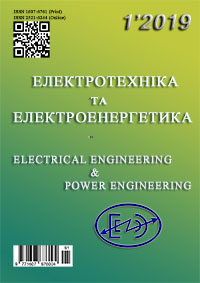SENSITIVITY OF CHARACTERISTICS OF MODEL OF THE ELECTRIC ARC TO CHANGE OF PARAMETERS OF ELEMENTS
DOI:
https://doi.org/10.15588/1607-6761-2019-1-2Keywords:
sensitivity, model, electric arc, variation, researchAbstract
Purpose. Consideration of the quantitative assessment of the sensitivity of certain properties of the automatic system to changes in the parameters of elements of only a part of the controlled object - the welding arc.
Methodology. When solving practical problems of regulation by electric arc and plasma technological processes, it is important to solve the problem of determining the optimal settings or parametric optimization of automatic control systems, among the methods of which are non-exploratory methods based on the use of the sensitivity apparatus.
Findings. The sensitivity to changes in the parameters of the nominal transfer function of the arc was analyzed, expressions for the sensitivity functions were obtained, and graphs of the corresponding functions were plotted. For more precision, it is assumed that changes in parameters are caused by changes in capacity, which always takes place in circuits with an arc.
Originality. The problem of finding an acceptable compromise between the requirements of a small value of the stabilization error without a significant increase in the value of the input variable is formulated and solved.
Practical value. Various rules have been developed to reduce the sensitivity of the transfer function of an object with respect to possible, unexpected changes in the parameters of a controlled object, which can be used in the design of high-quality transistor current sources for arc loads. To illustrate the sensitivity of the transfer function of the arc, the model shows the response to a stepwise change in input for different cases. Unfortunately, the article does not consider the characteristics of the disturbance and noise suppression, but only some options for reducing the sensitivity function are studied.
References
[1] Lenivkin, V. A., Evchenko, V. M. Strizhakov, E. L. (2008). Istochniki pitanija dlja svarki. Rostov n/D.: IC DGTU, 273.
[2] Loos, A. V., Lukutin, A. V., Saraev, Ju. N. (1998). Istochniki pitanija dlja impul'snyh tehnologicheskih processov. Tomsk: Izdatel'sko–poligraficheskaja firma TPU, 160.
[3] Miljutin, V. S., Shalimov, M. P., Shanchurov, S.M. (2007). Istochniki pitanija dlja svarki. M.: Ajris–press, 376.
[4] Vereshhago, E. N., Kvasnickij, V. F., Miroshnichen-ko, L. N., Pentegov, I. V. (2000). Shemotehnika invertornyh istochnikov pitanija dlja dugovoj nagruzki. Nikolaev: UGMTU, 283.
[5] Sidorec, V. N., Pentegov, I. V. (2013). Determi-nirovannyj haos v nelinejnyh cepjah s jelektricheskoj dugoj. Kiev: Mezhdunarodnaja associacija «Svarka», 272.
[6] Gorovic, A. M. (1970). Sintez sistem s obratnoj svjaz'ju. M.: Sovetskoe radio, 560..
[7] Shirokov, L. A. (1972). Algoritm sensitivnoj adaptacii. V kn.: Optimal'noe i adaptivnoe upravlenie. Saratov: SGU, 61-81.
[8] Bakalov, V. P., Dmitrikov, V. F., Kruk, B. I. (2007). Osnovy teorii cepej. M.: Gorjachaja linija – Telekom, 597.
[9] Mayer, E. A., King, R. J. (2001). An improved sampled-data current-mode-control model which explains the effects of control delay. IEEE Trans on Power Electronics, 16, 3, 369-374. DOI: 10.1109/63.923769
[10] Krein, P.T., Bass, R.M. (1990). Types of instabilities encountered in simple power electronics circuits: Unboundedness, chattering and chaos. Proc. IEEE Applied Power Electronics Conf., 191-194. DOI: 10.1109/APEC.1990.66411
[11] Lowke, J. J., Morrow, R., Haidar, J. (1997). A simplified unified theory of arcs and their electrodes. Journal of Physics D: Applied Physics, 30, 2033-2042. DOI: 10.1088/0022-3727/30/14/011
[12] Arif, A., Wang, Z., Wang, J., Mather, B., Bashualdo, H., Zhao, D. (2017). Load Modeling – A Review. IEEE Transactions on Smart Grid, 9, 6, 5986-5999. DOI: 10.1109/TSG.2017.2700436
[13] Vereshchago, Y. N., Kostyuchenko, V. I. (2014). A physical–mathematical model of the power circuit of a plasma torch. https://elibrary.ru/contents.asp?id=33978673">Welding International, 28, 2, 133-139. DOI: 10.1080/09507116.2013.796664
[14] Vereshhago, E. N., Kostjuchenko, V. I. (2013). Model' jelektricheskoj dugi v MATLAB / Simulink. Elektrotehnika ta elektroenergetyka, 2, 40-46. DOI: 10.15588/1607-6761-2013-2-5
[15] Vereshchago, E. N., Kostyuchenko, V. I. (2014). A Simulation Model of Electric Arc. Russian Electrical Engineering, 85, 6, 376-381. DOI: 10.3103/S106837121406011X
[16] Vereshhago, E. N., Kostjuchenko, V. I. (2014). Neustojchivost' rezhima v cepi s emkost'ju i jelektricheskoj dugoj, pitaemoj ot istochnika postojannogo toka. Avtomaticheskaja svarka, 8, 44-48.
Downloads
Published
How to Cite
Issue
Section
License
Copyright (c) 2019 E.N. Vereschago, V.I. Kostyuchenko

This work is licensed under a Creative Commons Attribution 4.0 International License.
Creative Commons Licensing Notifications in the Copyright Notices
Authors who publish with this journal agree to the following terms:
Authors retain copyright and grant the journal right of first publication with the work simultaneously licensed under aCreative Commons Attribution License that allows others to share the work with an acknowledgement of the work's authorship and initial publication in this journal.
Authors are able to enter into separate, additional contractual arrangements for the non-exclusive distribution of the journal's published version of the work (e.g., post it to an institutional repository or publish it in a book), with an acknowledgement of its initial publication in this journal.
Authors are permitted and encouraged to post their work online (e.g., in institutional repositories or on their website) prior to and during the submission process, as it can lead to productive exchanges, as well as earlier and greater citation of published work.

